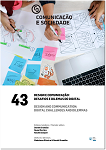Flows, transits and (dis)connection points: contributions towards a critical Lusophony
DOI:
https://doi.org/10.17231/comsoc.34(2018).2942Keywords:
Lusophony, culture, interculturality, exceptionalism, singularityAbstract
As a concept, Lusophony is today looked upon with justified suspicion by many Portuguese-speaking people. It is impossible to separate this concept from the colonial ballast that bounds the countries that have Portuguese as the official language. However, it is important to not end the debate on this plane. In this work we revisit some of the foundational narratives of a mythical identity, such as the different hauntings of a promised Quinto Império or lusotropicalism, both in its founding in Brazil and in its reconstitution in Portugal. On the other hand, we discuss about Lusophony from its formal matrix: a language shared by different peoples in different continents. Our objective is to problematize and deepen the debate, summoning a unique experience of reflection, concretely the one that is elaborated by Jorge de Sena already in the final stretch of Estado Novo. Based on these focuses, we argue about the possibility of Lusophony to include lines of escape from certain reductionisms, namely those that derive from the convergent and divergent circulation of narratives and singular experiences. This circulation of people, ideas and memories, is potentially defining a diffuse and polycentric space of effective interculturality, which nurtures further reflection.
Downloads
Downloads
Published
How to Cite
Issue
Section
License
Authors own the copyright, providing the journal with the right of first publication. The work is licensed under a Creative Commons Attribution 4.0 International License.














